Are you ready for another incredible trading guide?
Well, lined up for you today…
…I’m broadcasting the ultimate showdown…
Fib Extension vs Retracement!
Although these tools might look complex on the surface, that’s only because most traders overcomplicate them…
Not only that, but there are a tonne of Fibonacci tools out there to get lost in!…
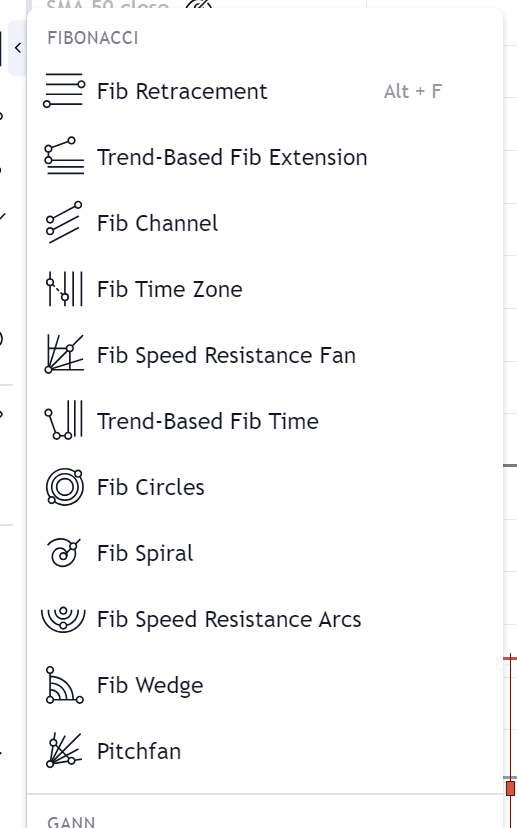
Looks pretty confusing, right?
That’s why this guide filters out the noise, helping you get consistent with two awesome Fibonacci tools at the same time!
You’ll cover:
- What these two Fibonacci tools are and how they are meant to be used in the market
- The secret to using both the Fibonacci extension and retracement like a pro
- A complete strategy and framework to profit from both
- Common mistakes on using the Fib extension vs retracement (and what you should do instead)
By the end of this guide…
You’ll master using and trading with these awesome Fibonacci wonders!
Are you ready?
Then let’s get started!
Fib Extension vs Retracement: What Are They and How Do They Work?
This article focuses on these two Fibonacci tools today…
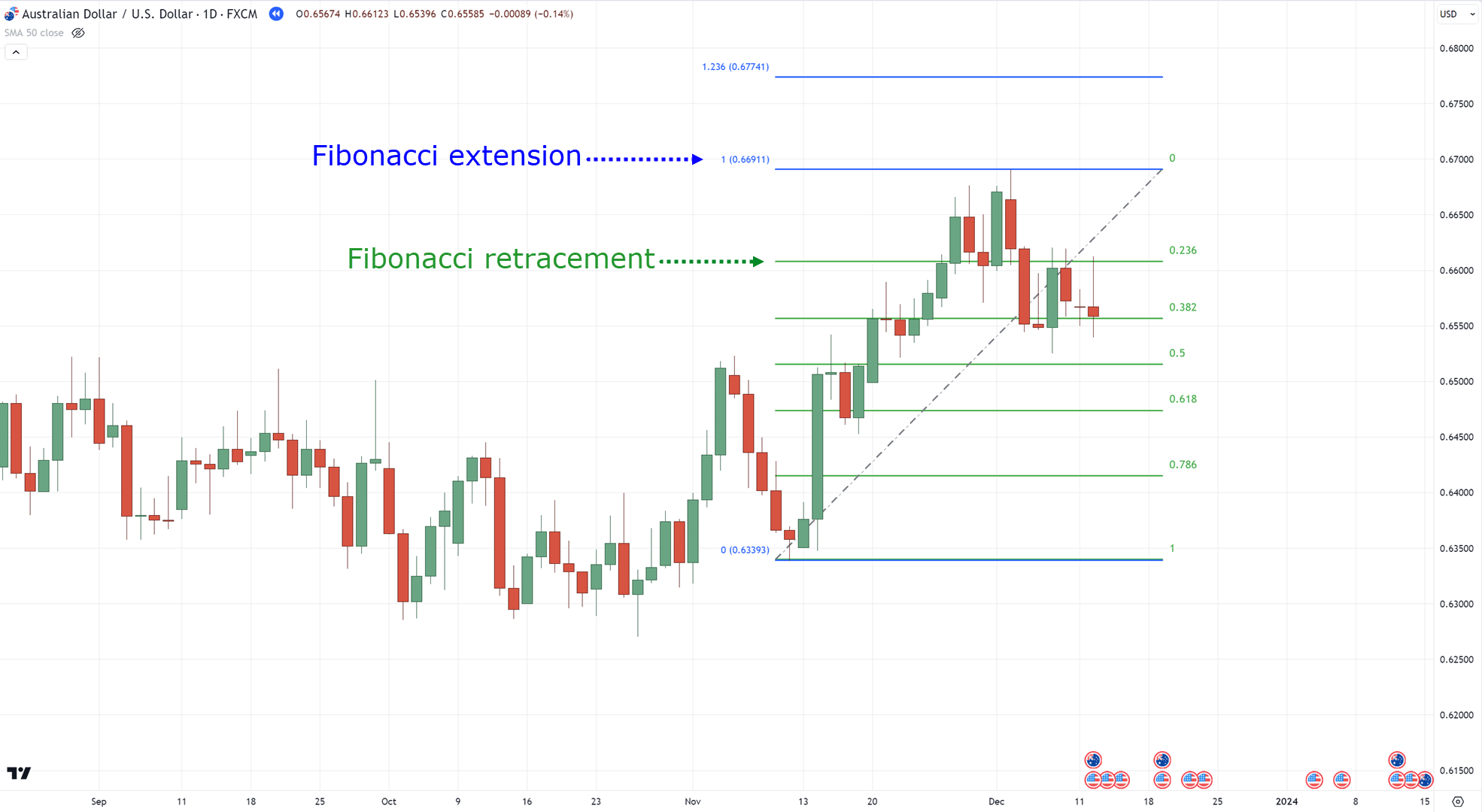
That’s right, I won’t be discussing every single kind of Fibonacci tool out there.
Why?
Because the main purpose of this guide is simple:
To help you capture and profit from trends straightforwardly and consistently!
Sounds good, right?
So, let’s start with Fib retracement…
Fibonacci Retracement
Basically, think of it like this.
You’ve had a great run-up in price, and you’re trying to figure out how deep the pullback will go when it happens…
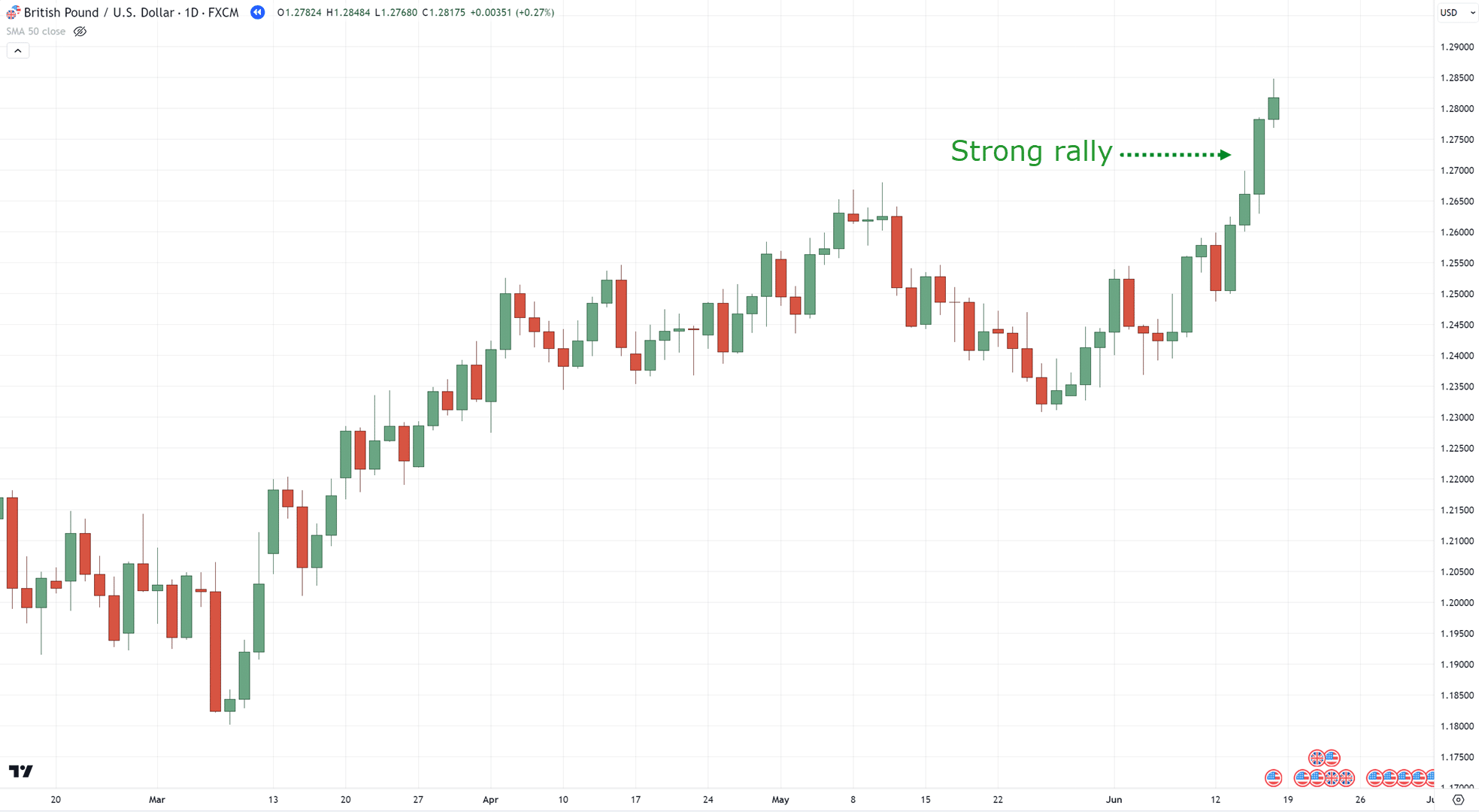
In fact, the Fib retracement is an excellent tool to use in this situation.
Why?
Well, by plotting a Fib retracement from the bottom to the top of the current leg…
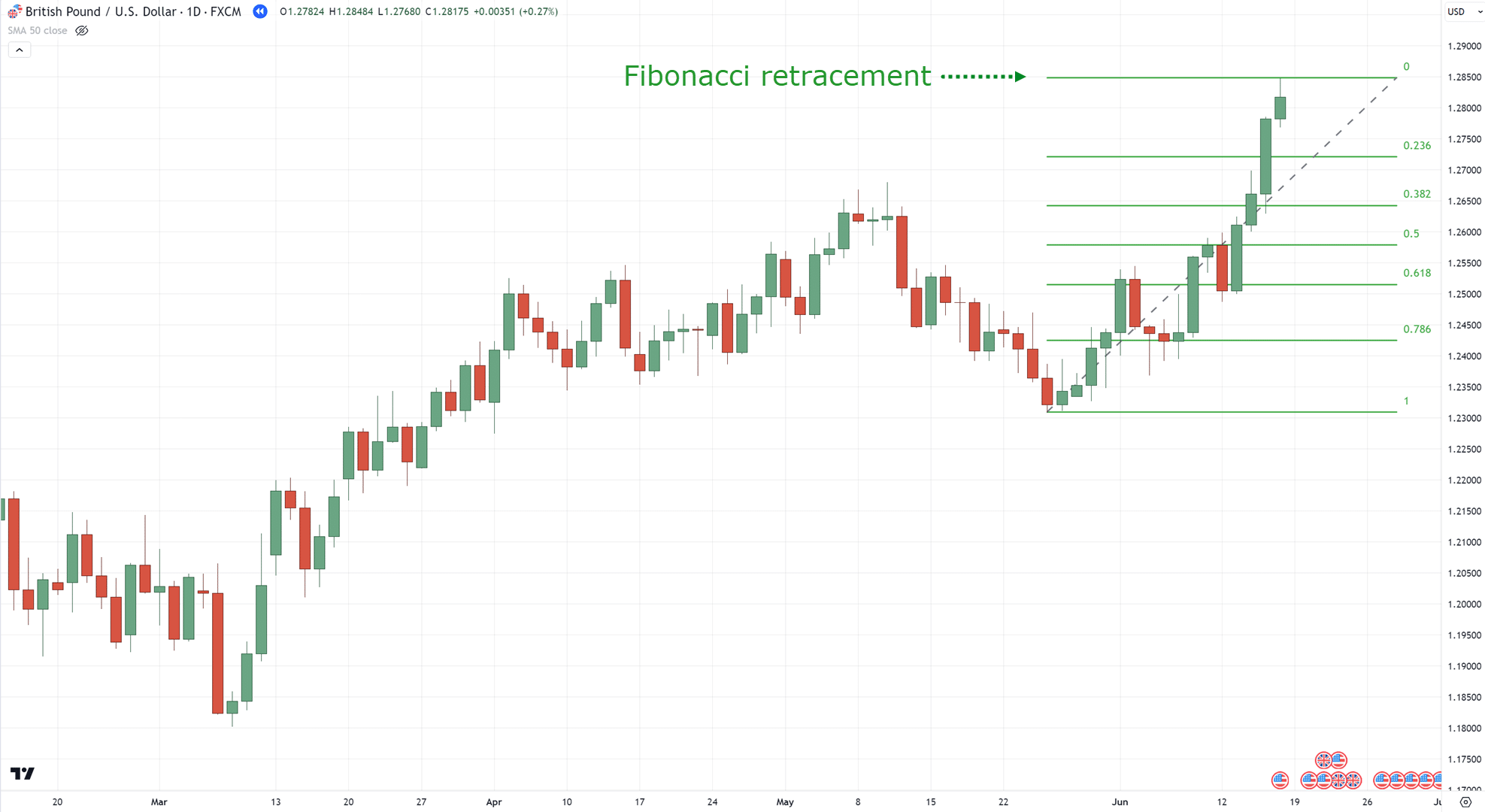
…you’ll be able to anticipate how deep the pullback will go!…
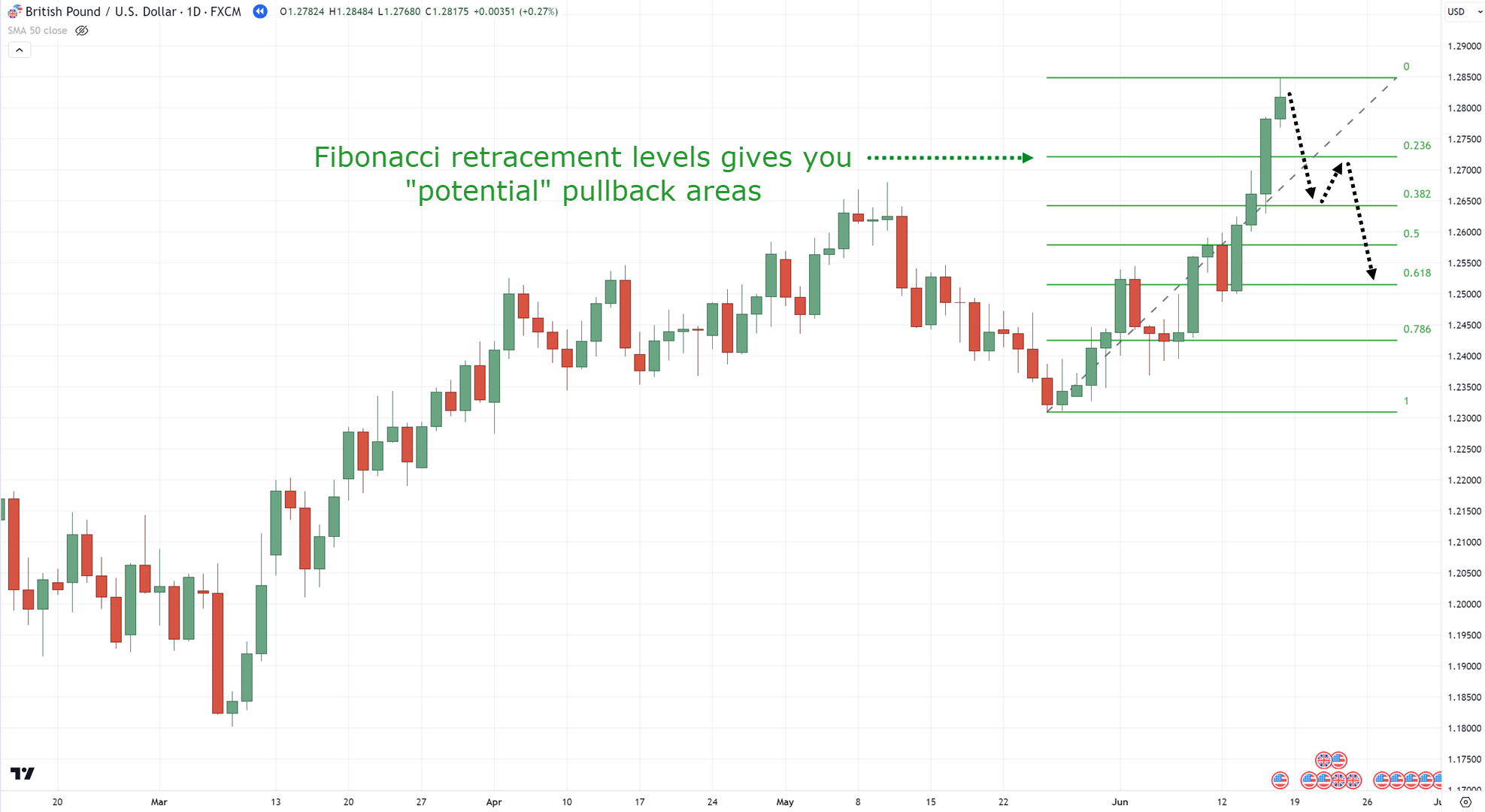
Great, huh?
But – take note!
This tool doesn’t “predict” how deep pullbacks will get.
It does, however, give you multiple levels to trade when the market reverses from them (which I’ll tell you more about in the later section).
On the other side of the coin…
There is the Fib extension, the explorer charting uncharted territories…
Fibonacci Extension
Similar to the Fibonacci retracement, plot this on an existing price leg…
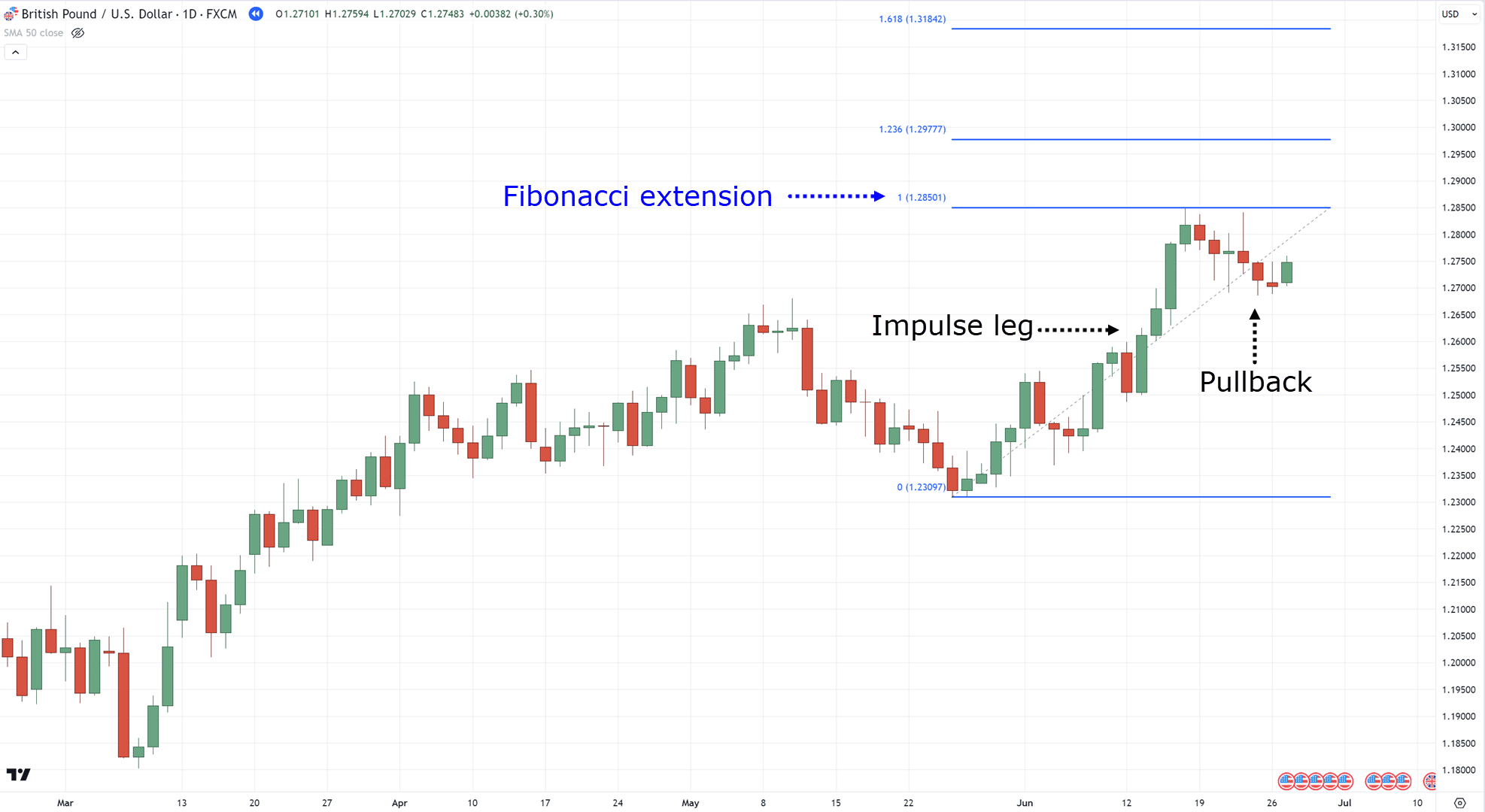
But instead of looking for a pullback…
…it’s projecting where the price might head next during a breakout!
Basically, the Fibonacci retracement tool is the key to entering pullbacks…
…while the Fibonacci extension helps you define your take-profit levels…
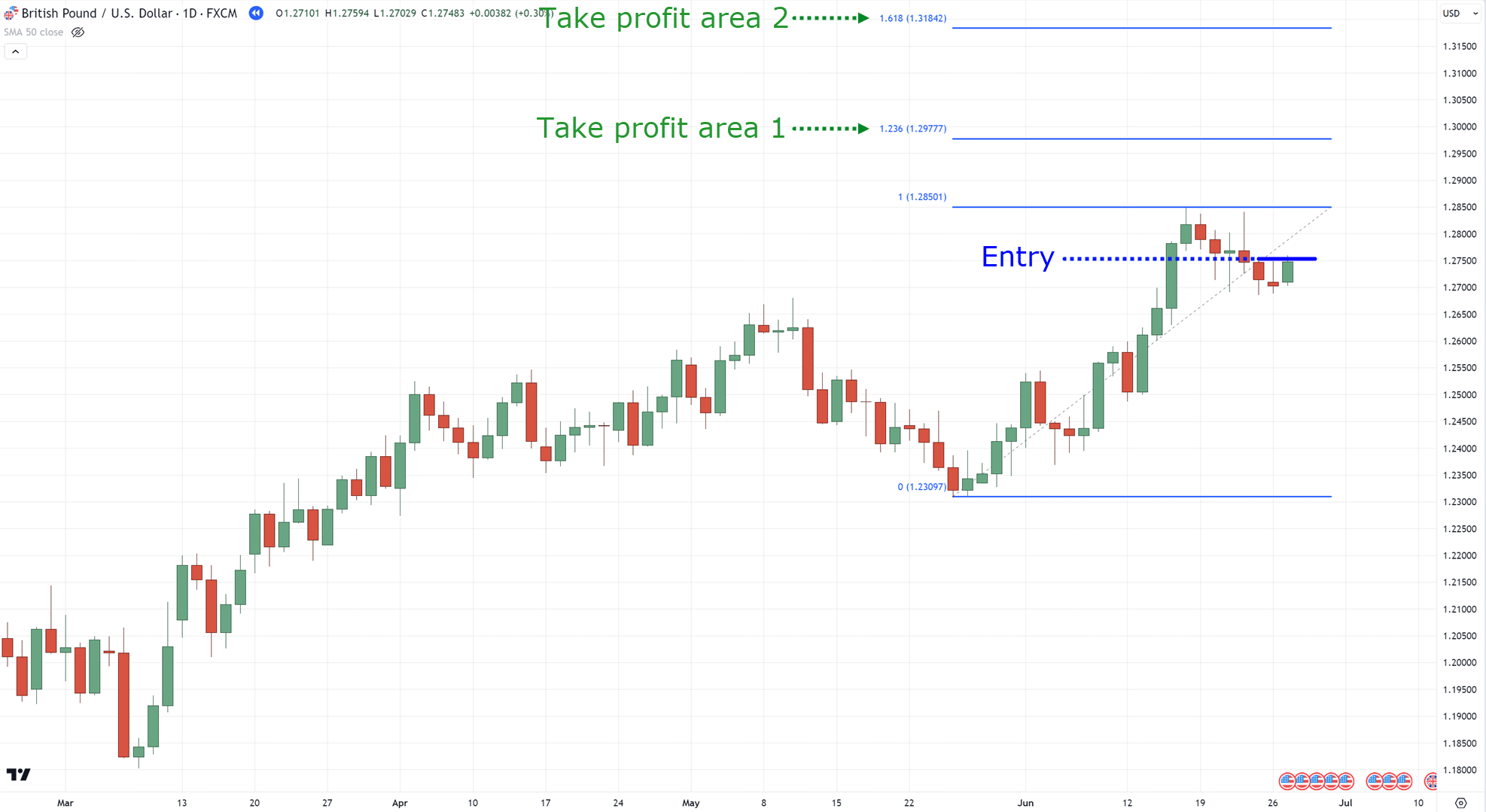
While both tools are part of the Fibonacci family, they clearly serve very different roles in your trading strategy.
So, with that said…
How exactly do you use these tools effectively?
You can analyze markets with them all day, but what are the crucial steps needed to begin trading?
Read on to find out in the next section!
Fib Extension vs Retracement: How to Use Both Tools Like a Pro
First things first…
You need to get proficient in plotting these Fibonacci tools.
If it’s something you’re struggling with at the moment, don’t panic, as there’s a fantastic guide for you here.
But to put things simply, you must learn how to recognize “impulse moves” in the markets such as these…
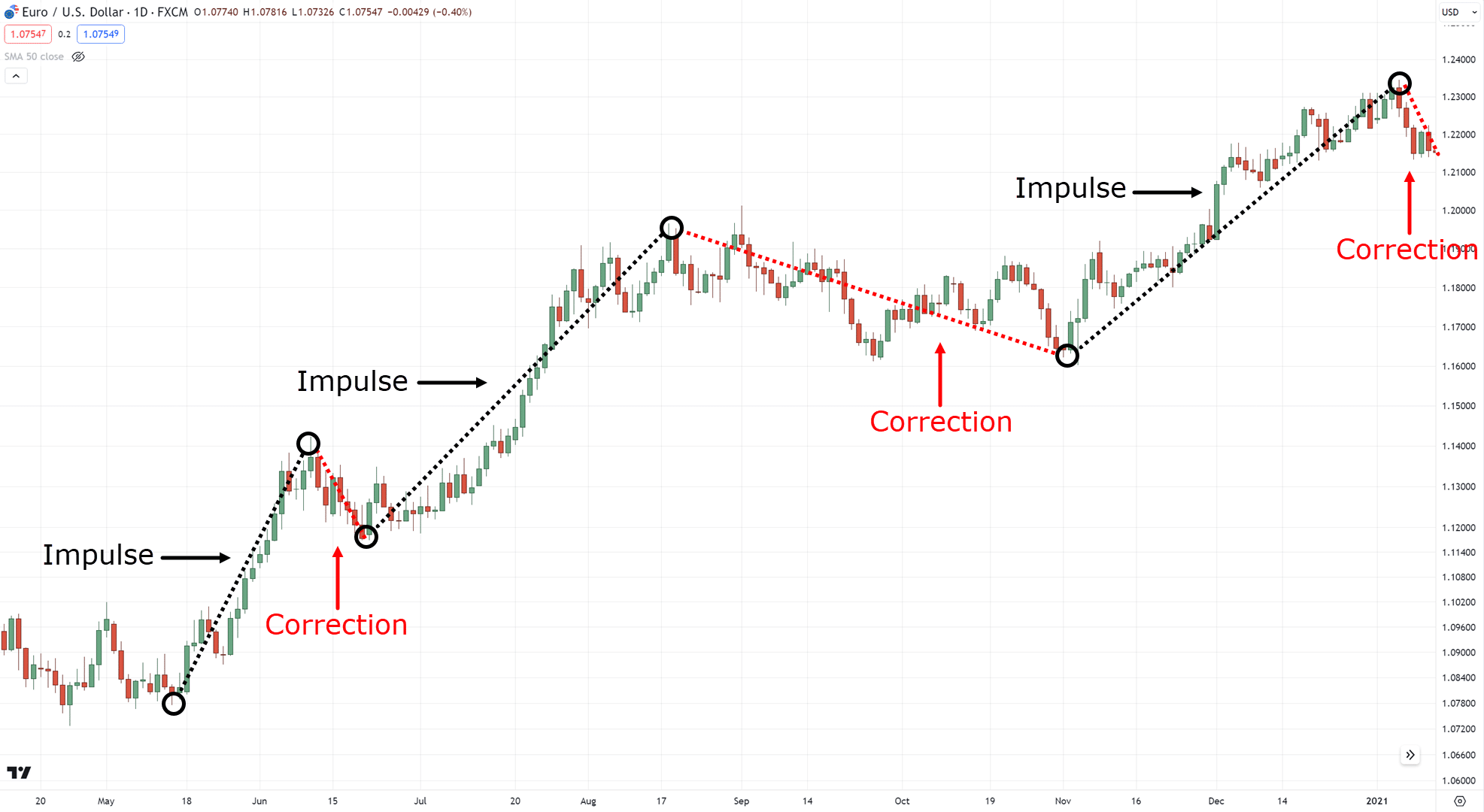
…because their tops and bottoms are your references when plotting your Fib extension vs retracement tools…
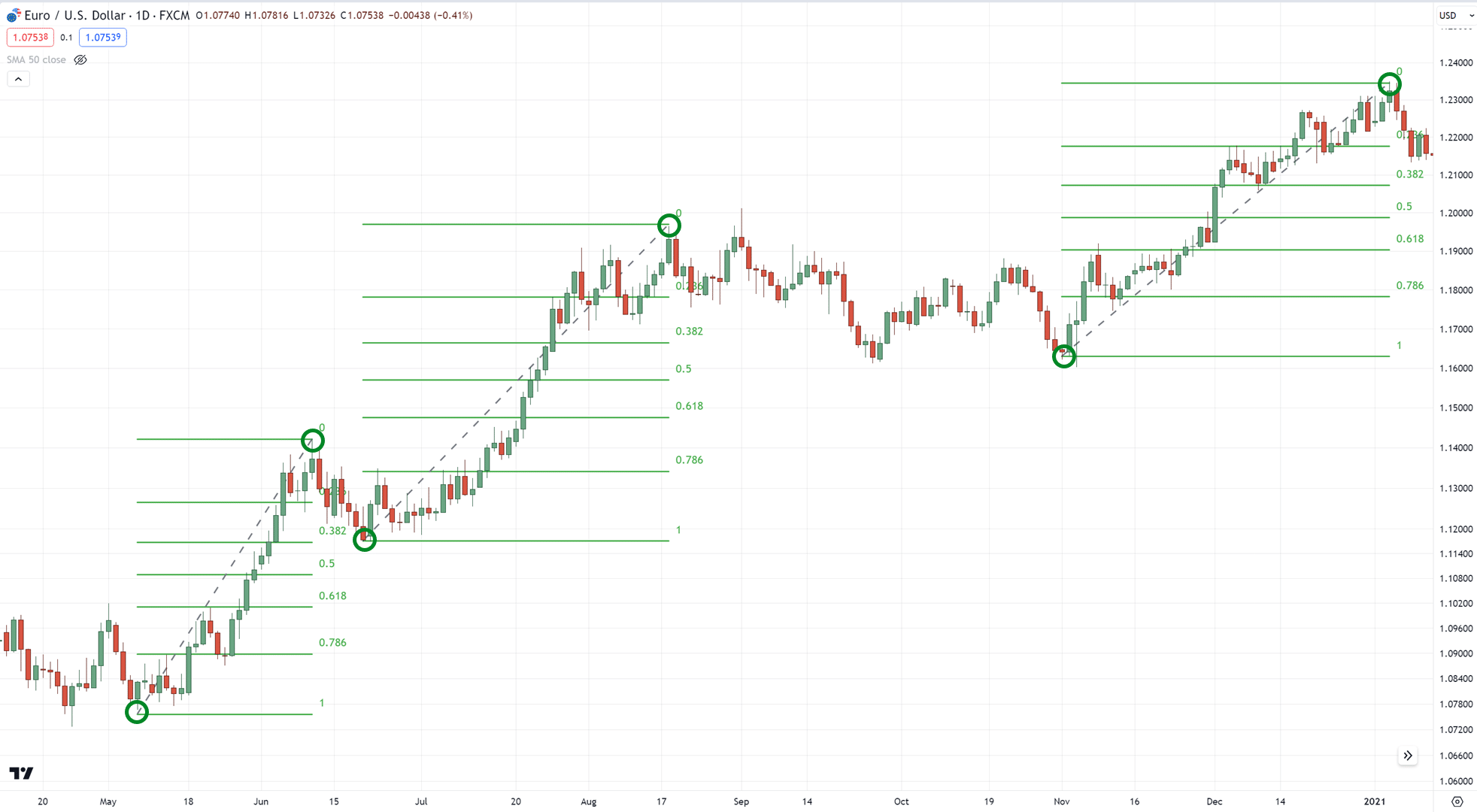
Can you see how they’re drawn?
So, with that out of the way…
Here are the things you need to keep in mind when using both the Fib extension vs retracement.
First up…
Define your trend first
This will be a recurring theme in the article.
After all, knowing the context of the markets is king!
When the market is in an uptrend, place your Fibonacci from bottom to top…
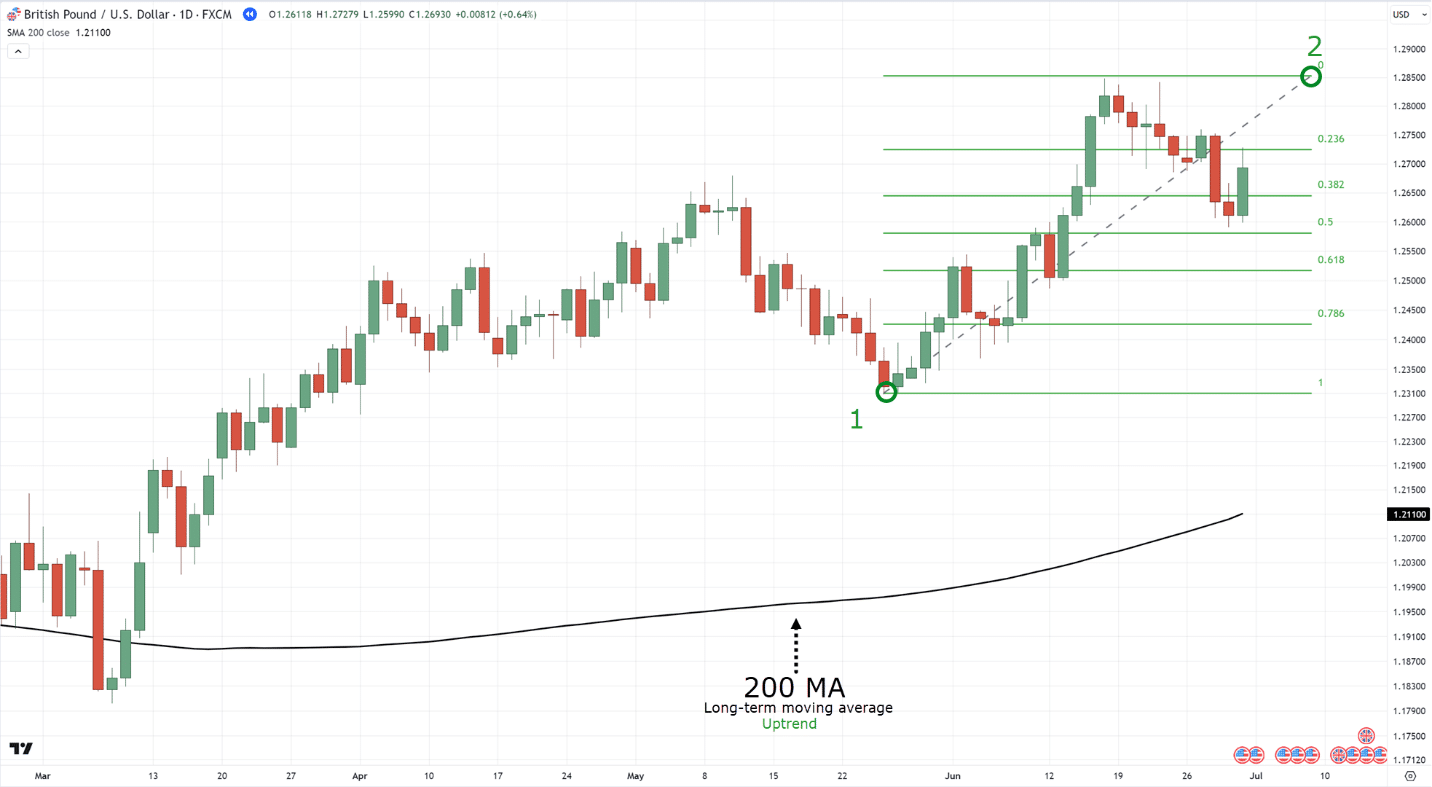
…if the market is in a downtrend, then plot your Fibonacci from top to bottom instead…
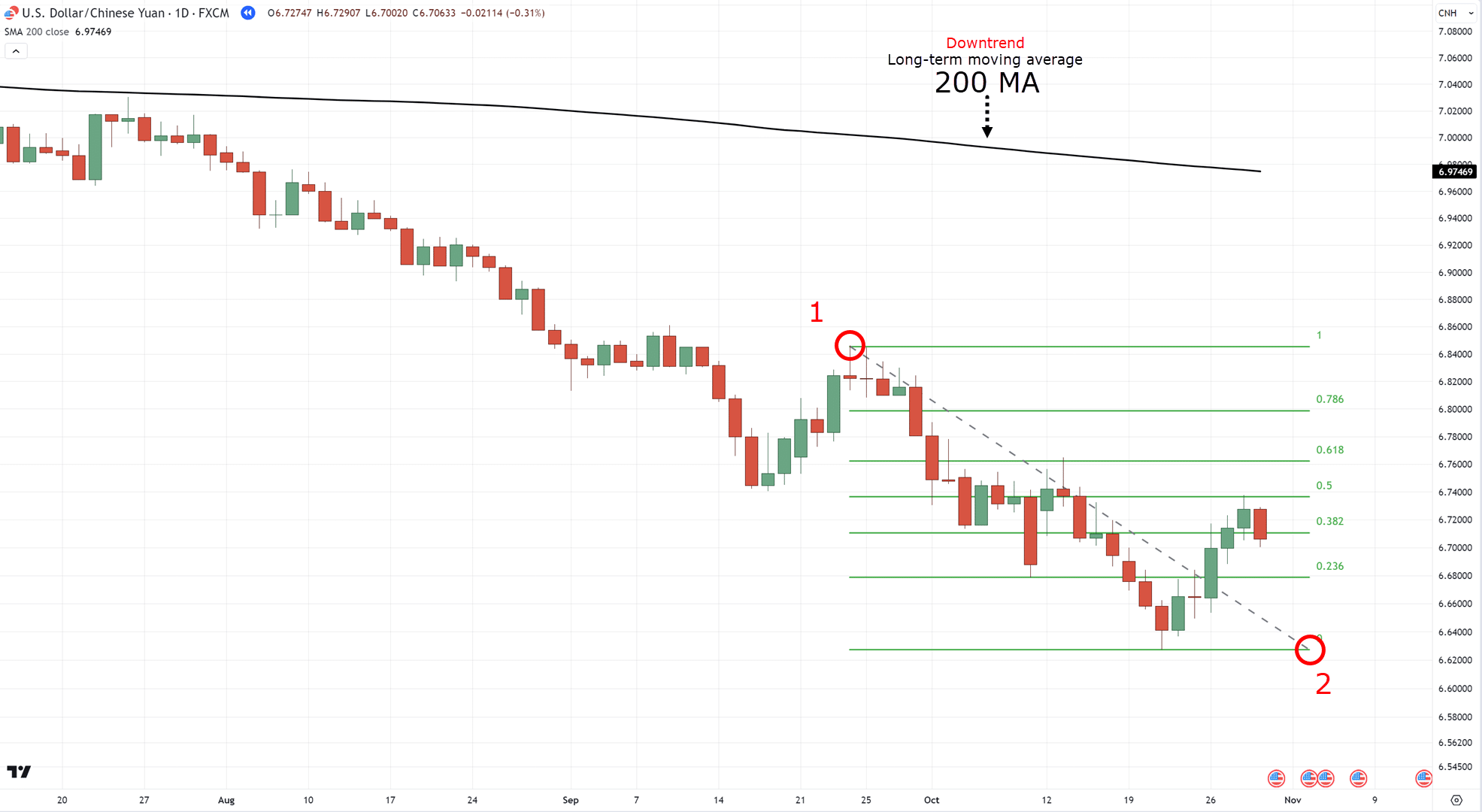
Easy, right?
If you need to brush up on the 200-period moving average, you can always check out this great writeup here, too: The 200 Day Moving Average Strategy Guide
Alright, once you’ve defined your trend, the next thing you must focus on is…
Define your setups
Here’s a cheat code for you:
Pullback setups?
Fibonacci retracement.
Breakout setups?
Fibonacci extension.
That’s right, if you’re hunting for those sweet pullback trades, whip out your Fibonacci retracement tool!
It’s perfect for pinpointing those levels where the market might catch its breath before continuing…
Pullback setup using the Fibonacci retracement:
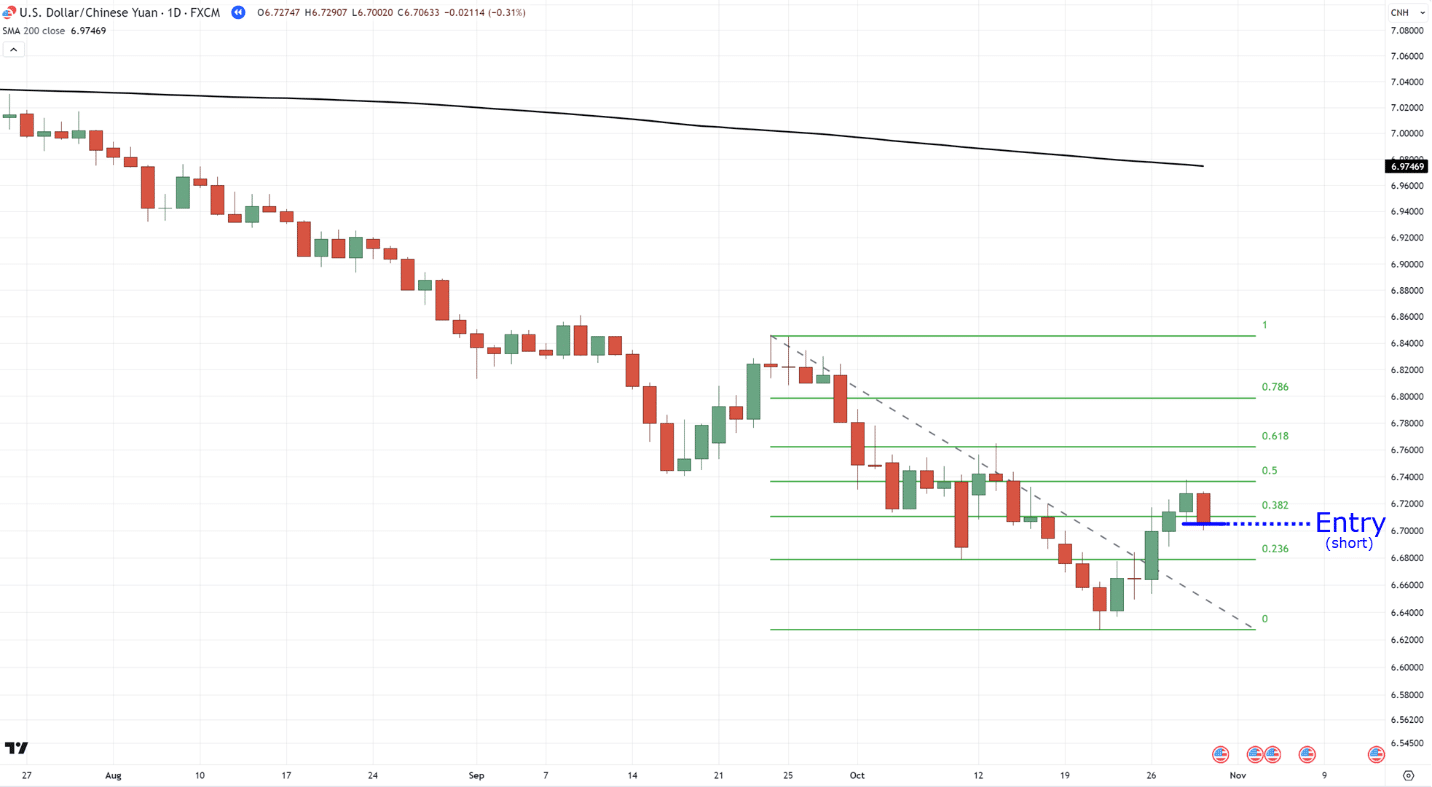
And as always, we’re timing these setups along with the overall trend.
Based on the example, the market is in a downtrend, so we’ll be timing for shorts.
Following so far?
Because on the flip side…
If you’re eager to catch breakout trades, the Fibonacci extension is your best buddy!
This tool will help you project where the price might head once it breaks free from its current range…
Breakout trading setup using the Fibonacci extension:
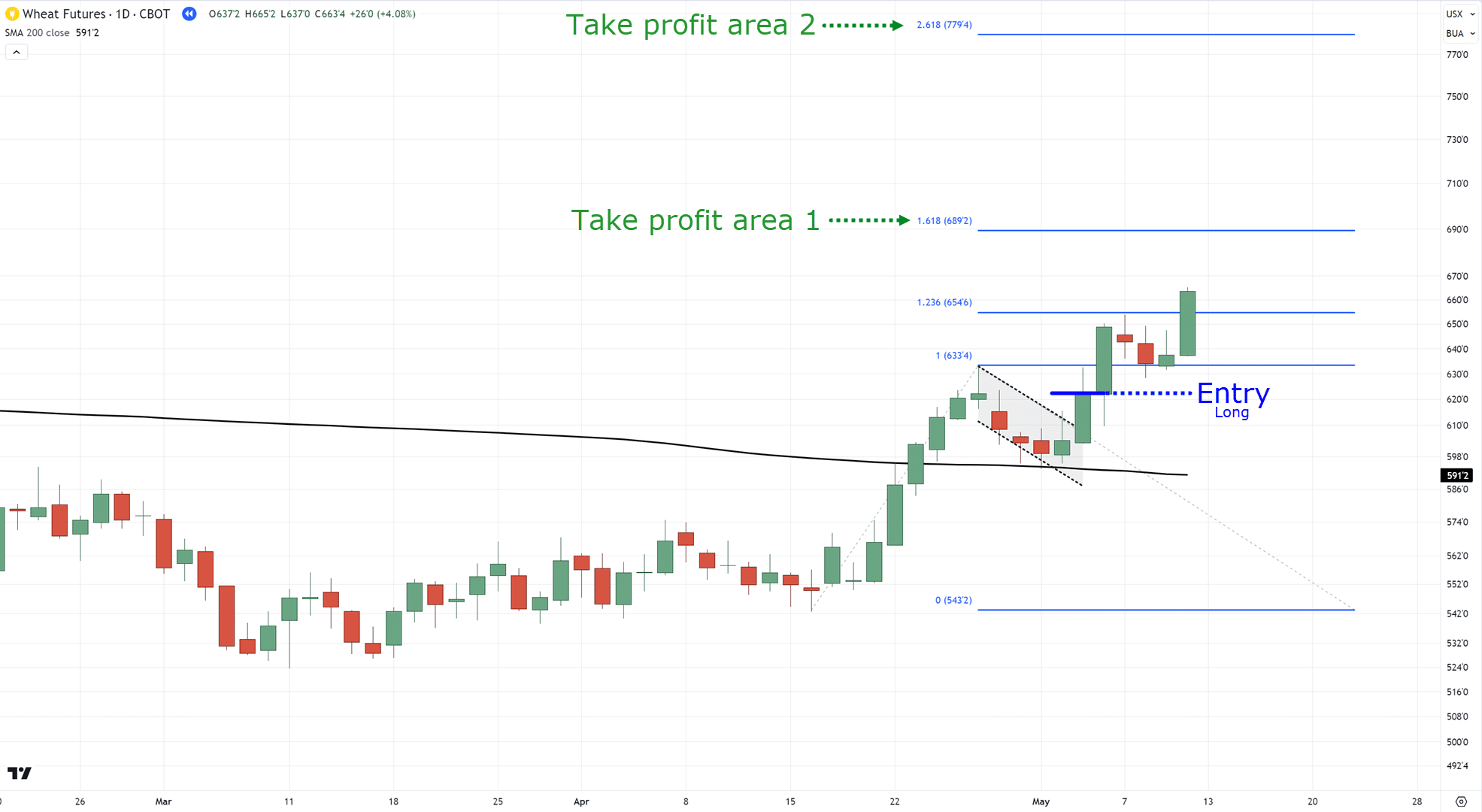
Look good?
At this point, I can hear your questions…
“So… how do I exactly enter trades?”
“When do I press the buy button?”
“Can I use both the Fib extension vs retracement?”
(Spoiler alert: Absolutely!)
Rest assured, my friend, in the next section, I’ll share a secret technique on how to combine both tools for maximum trading awesomeness…
…and answer the rest of your excellent questions!
Fib Extension vs Retracement: A Complete Combo Strategy
Ready to level up your trading game?
The secret ingredient to combining both tools is known as the TAEE framework.
This framework is the core foundation of all trading concepts we usually teach here.
Especially when mastering both Fib extension vs retracement.
So what does this framework stand for?
TAEE stands for identifying the Trend (T), Area of Value (A), Entries (E), and Exits (E).
Here’s how to use it to blend Fib extension and retracement like a pro!
Step 1: Identify the Trend
You’ve seen this before, so let’s jump straight in.
In this example, we’ll use an uptrend…
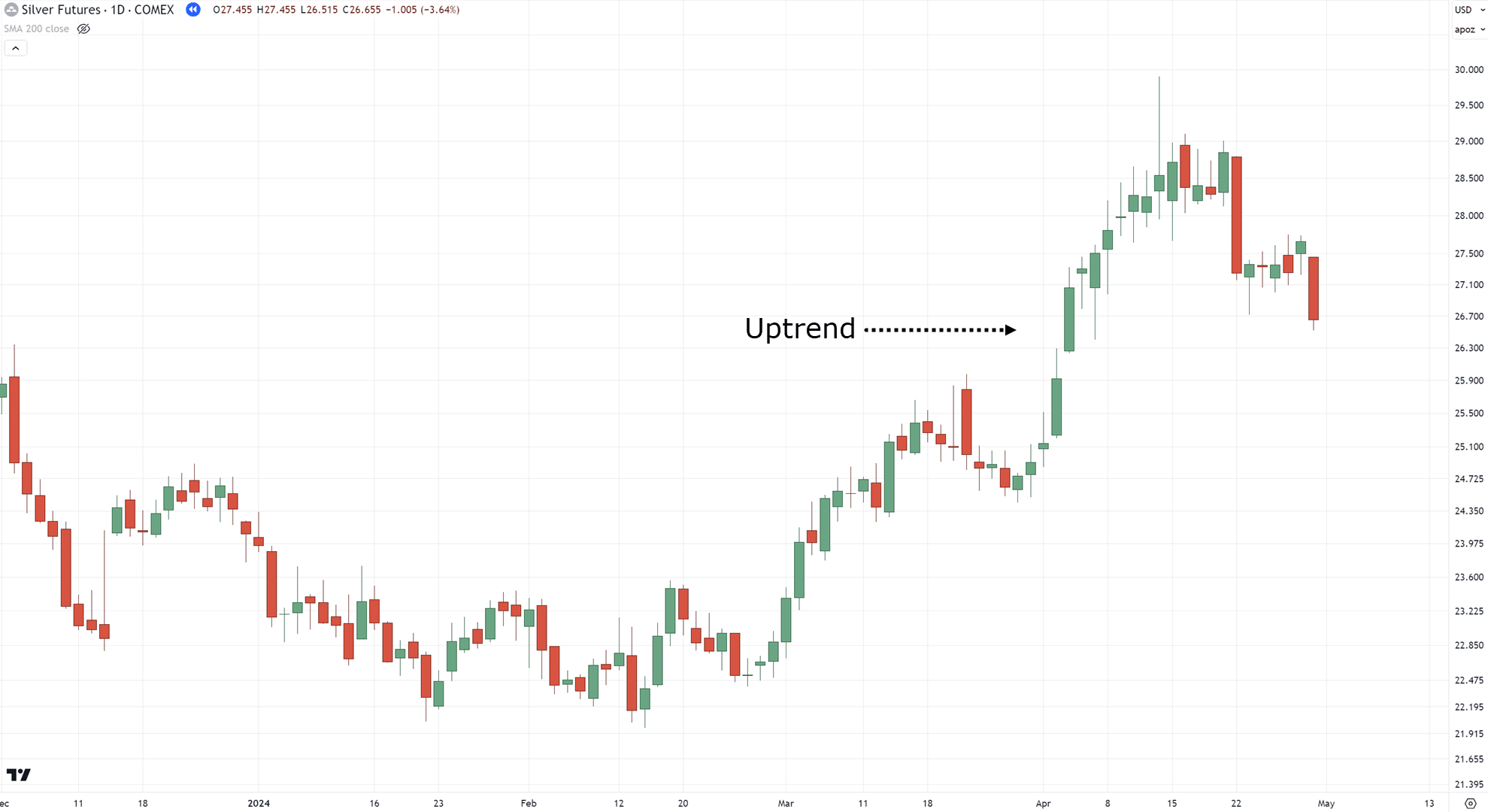
There can be a lot of ways to define your trends, but in this case, I’ll use a long-term moving average period such as the 200-period moving average.
If the price is above the 200 MA?
Uptrend.
If the price is below it?
Downtrend.
And in this example?…
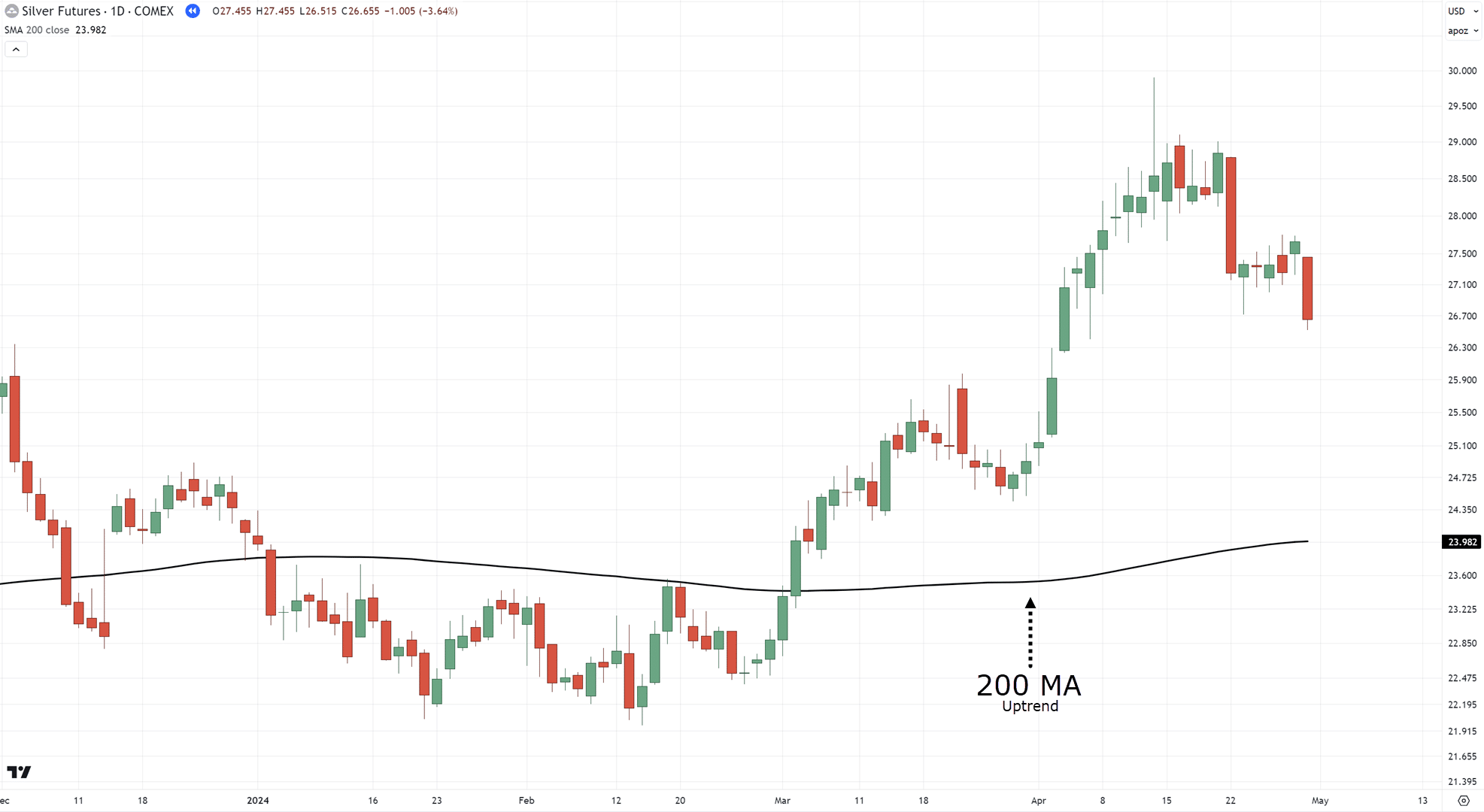
That’s right… it’s in an uptrend!
Step 2: Identify the Area of Values
This is where the magic begins.
Start by plotting both your Fib extension vs retracement on the current leg of the move…
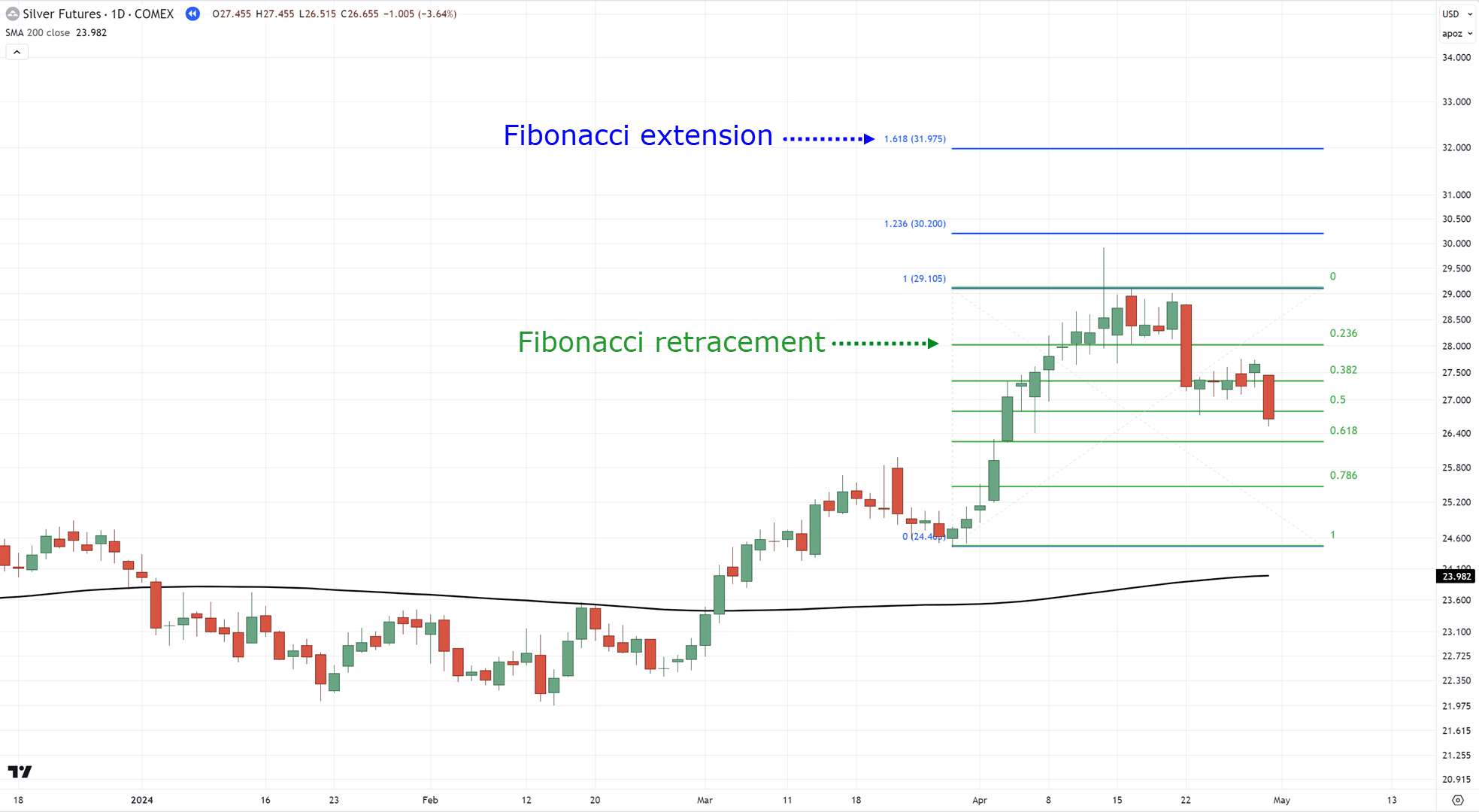
You heard me – on both of them!
And remember, you want to plot them from bottom to top since it’s in an uptrend:

Got it?
Step 3: Identify your Entries
Now, you want to keep an eye on the Fibonacci retracement first.
This is where you will find your entries!
You’ll want to wait for the price to close below a major level between 50.0% and 61.8% level…
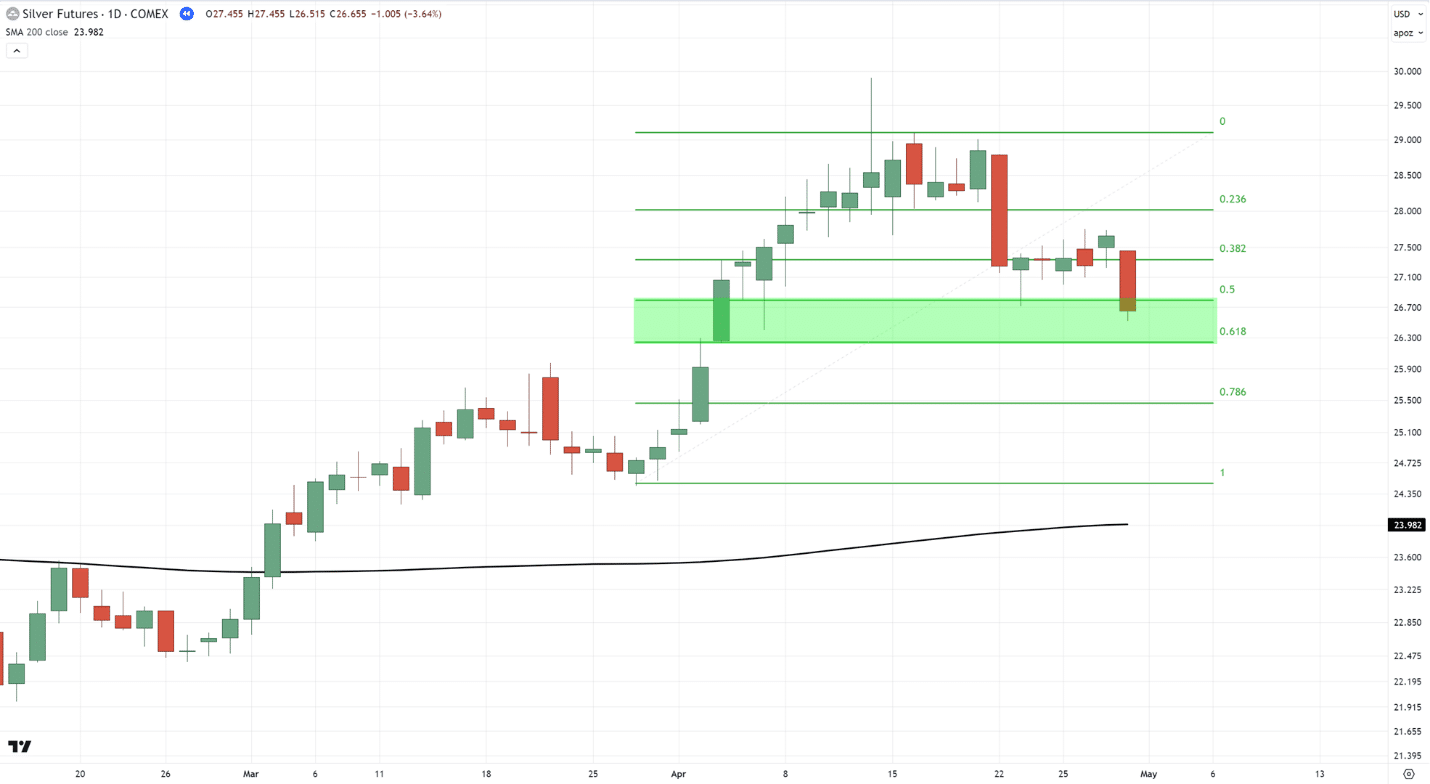
The trick is…
…waiting for the price to close back above the major levels – with a strong bullish candlestick!…
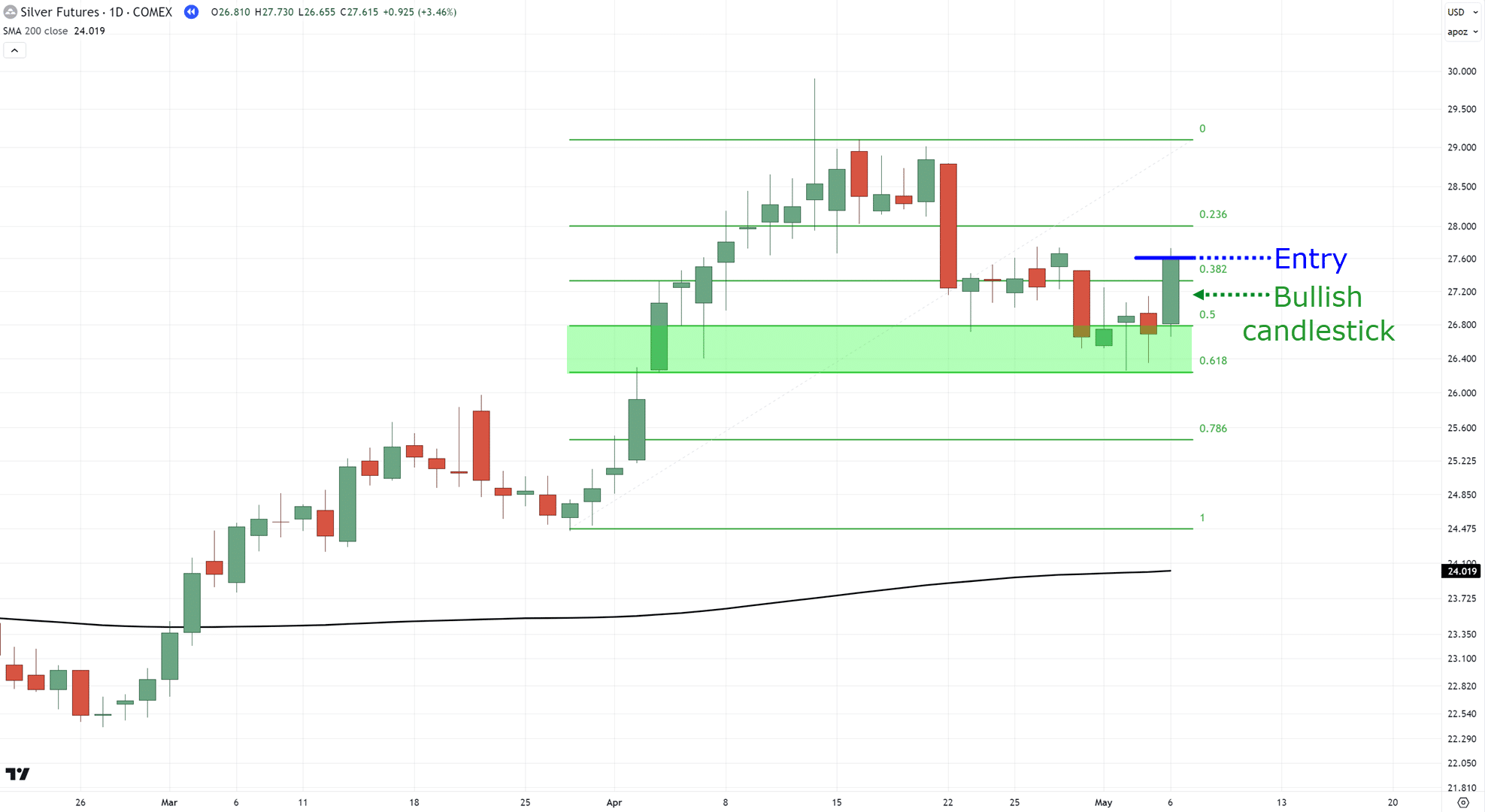
Once you see that, enter at the next candle open…
…and that’s it!
Step 4: Identify your Exits
This is where the Fibonacci extension really shines.
Once the price reaches the nearest high, you can take partial profits…
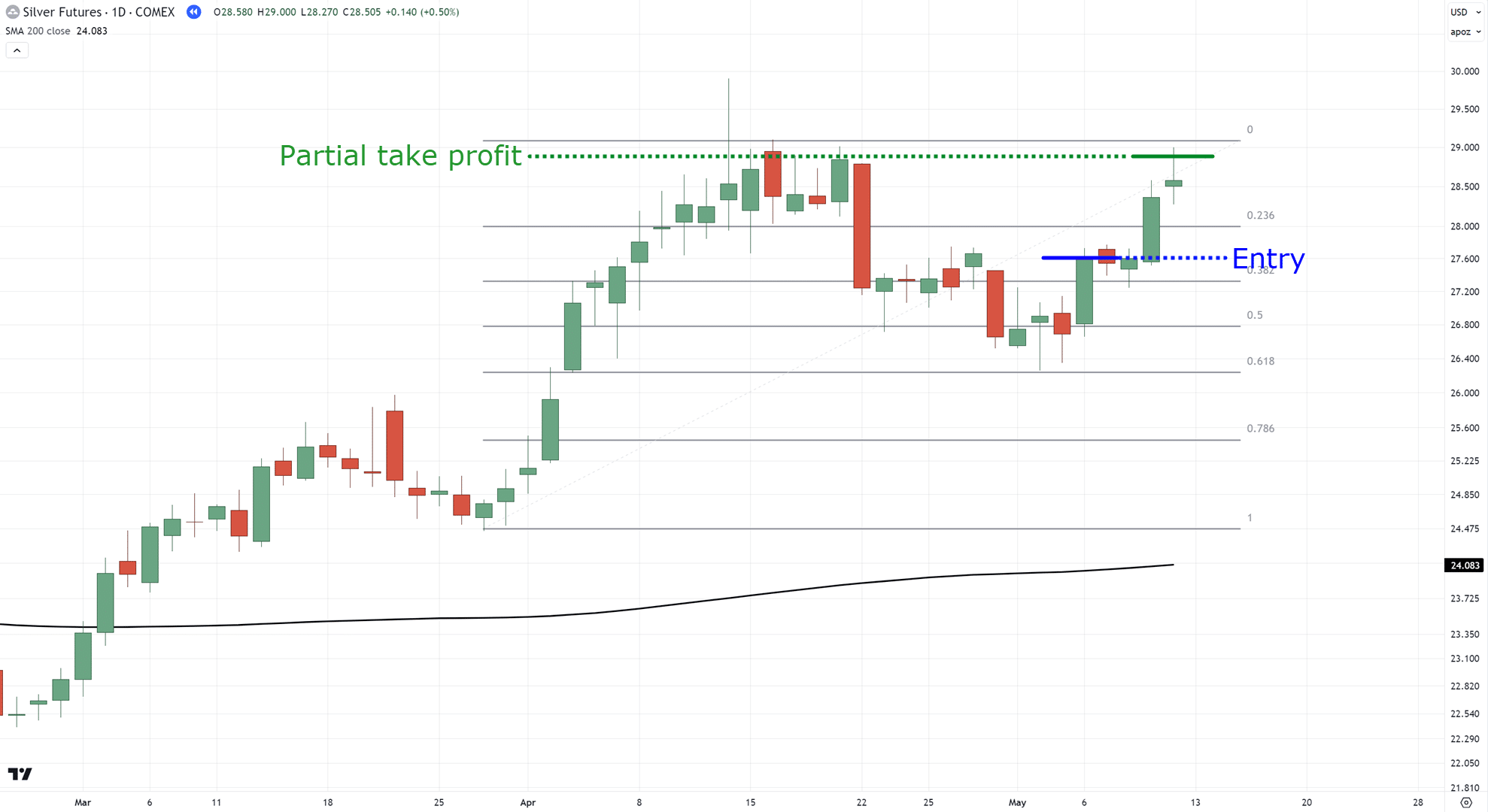
Then, for the remaining position, wait for the price to close above a Fibonacci extension level….
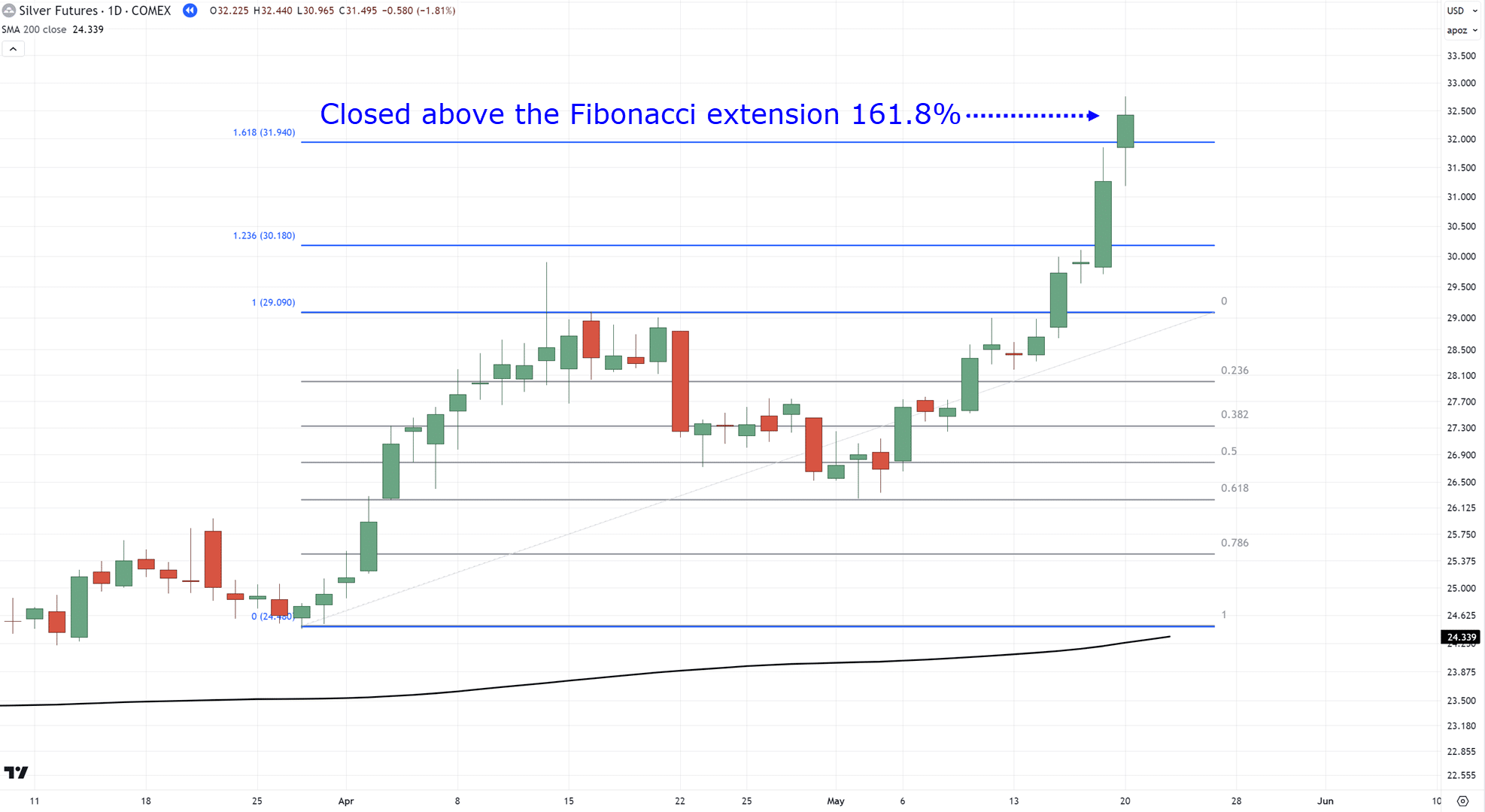
If it closes back below it, exit the trade…
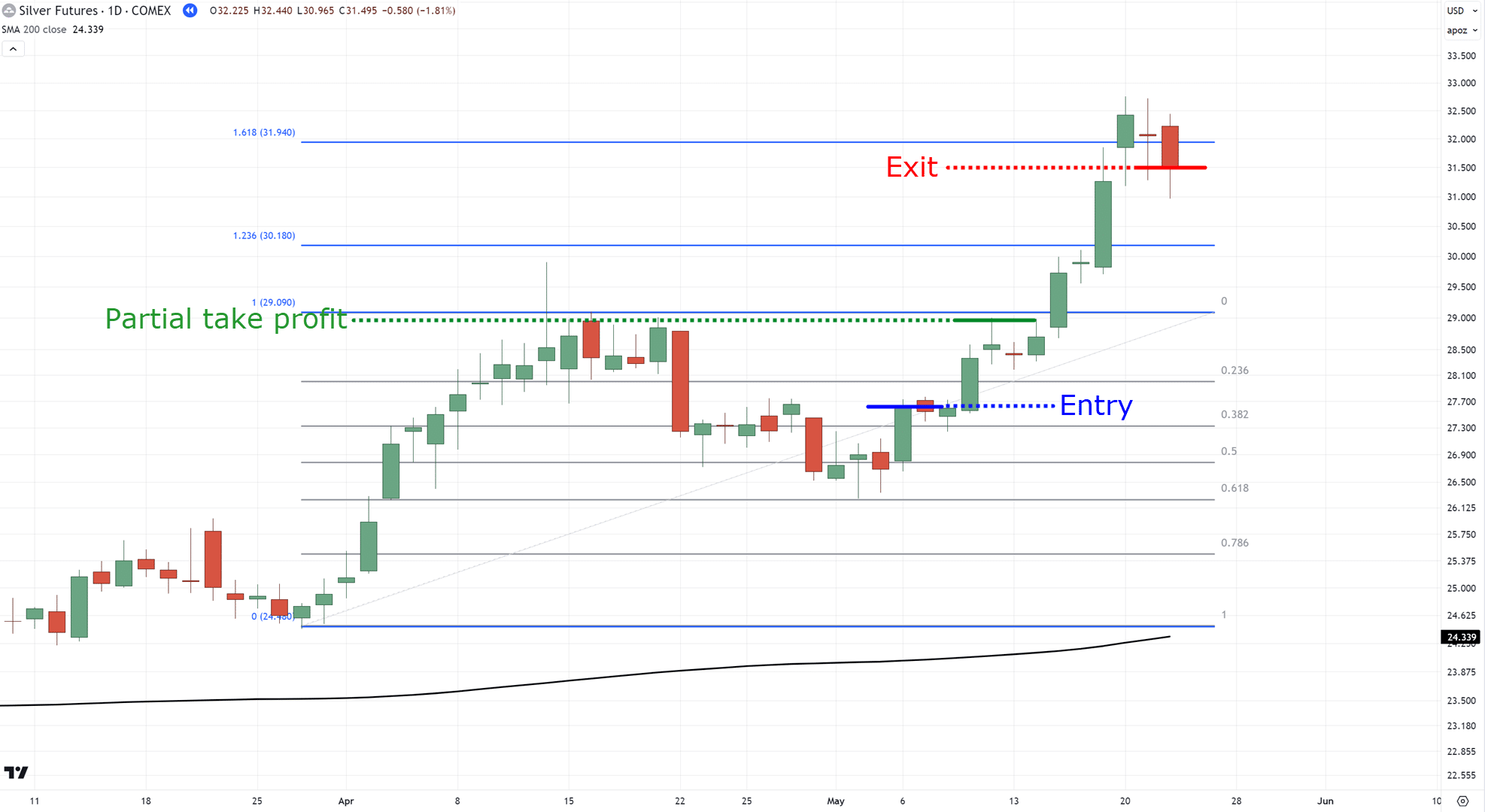
Basically, this acts like a trailing stop loss, catching the breakout momentum.
Always remember – you’re looking for strong breakouts here!
In fact, this is similar to how you entered the trade:
Wait to close beyond a certain Fibonacci level…
…then enter when it closes back!
BONUS: Flexible trade management
Here’s an extra trick that might prove useful.
On your first entry, risk 0.5% on your entries with Fibonacci retracement…
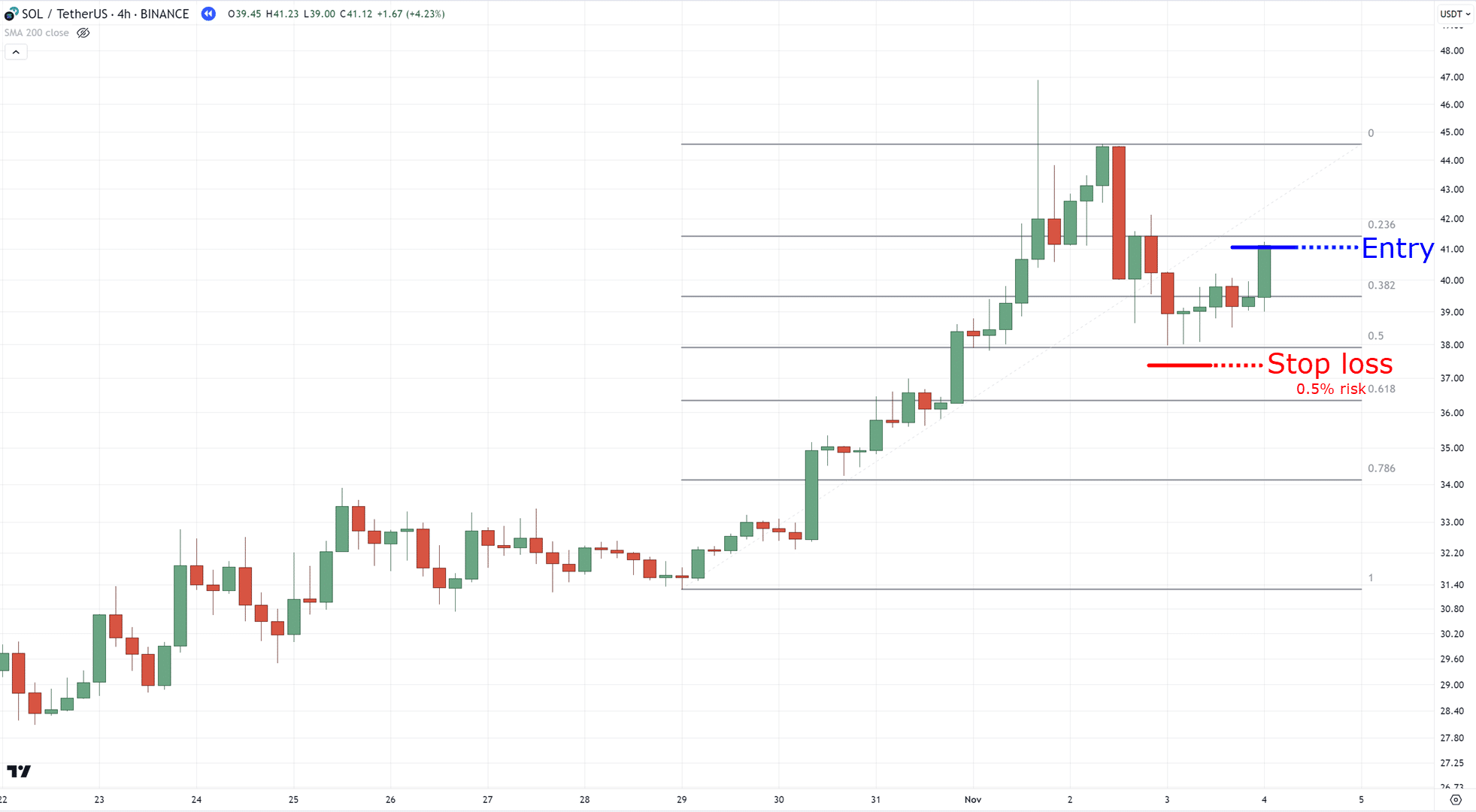
Following this, if the price makes a build-up at resistance and then breaks out…
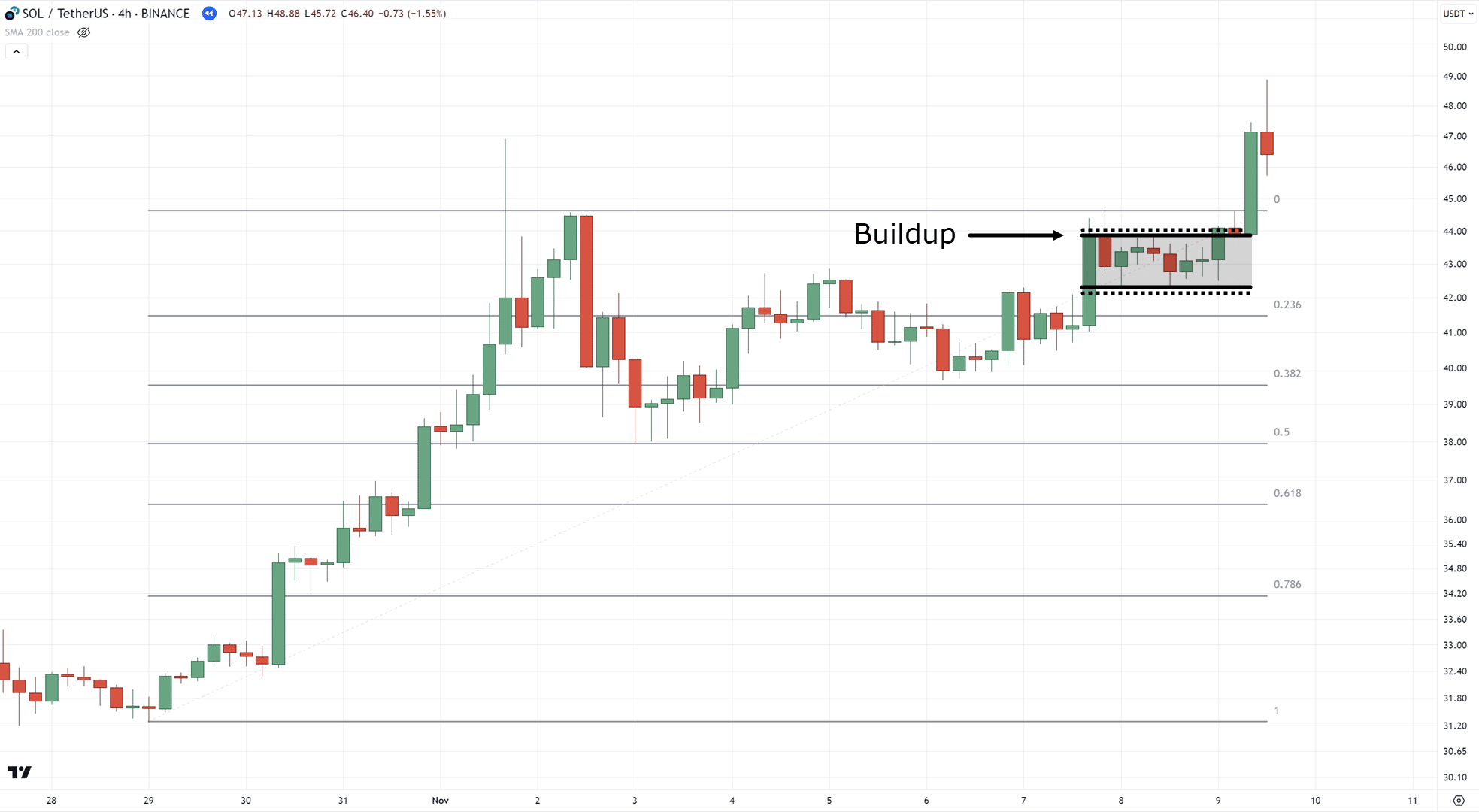
…scale in your trades using the Fibonacci extension to trail your stop loss!…
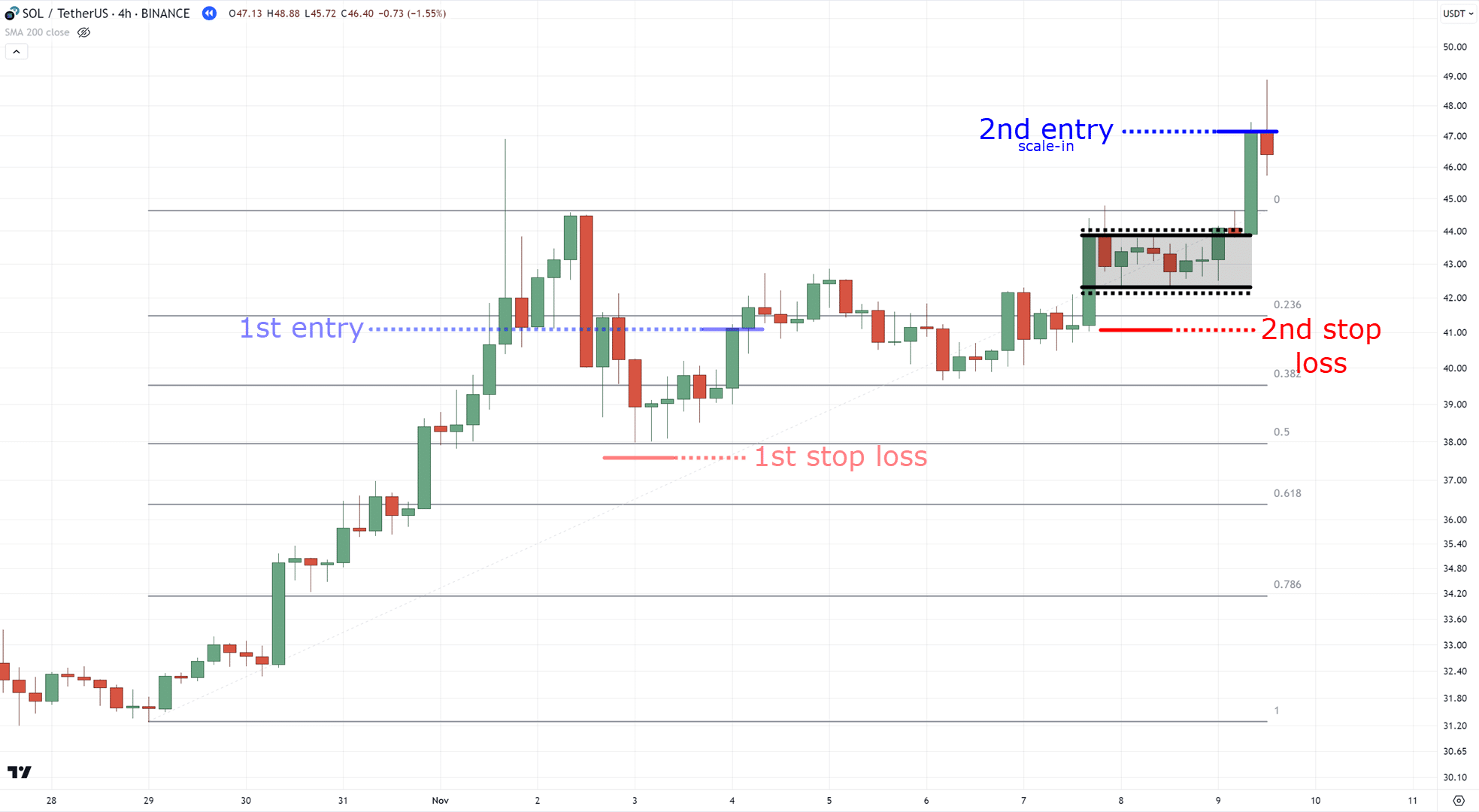
…you can see there’s some real flexibility in the system!
You can either risk small then scale in…
…or take partial profits and trail the remaining half…
…or simply have fixed take profit at the nearest resistance!
Pretty cool, right?
Now, in the next and final section…
I’ll share crucial DOs and DON’Ts when it comes to Fib Extension vs Retracement.
And yes, you’ll want to know how to use it as well as how not to use it!
Fib Extension vs Retracement: Things to avoid
I know I shared with you some spicy techniques on how to use both tools.
However, one thing to always take note of is to…
Avoid plotting too many Fibonacci on your chart
Remember…
You’re using these Fibonacci tools to help you trade the markets.
This means that you should avoid plotting them like this…
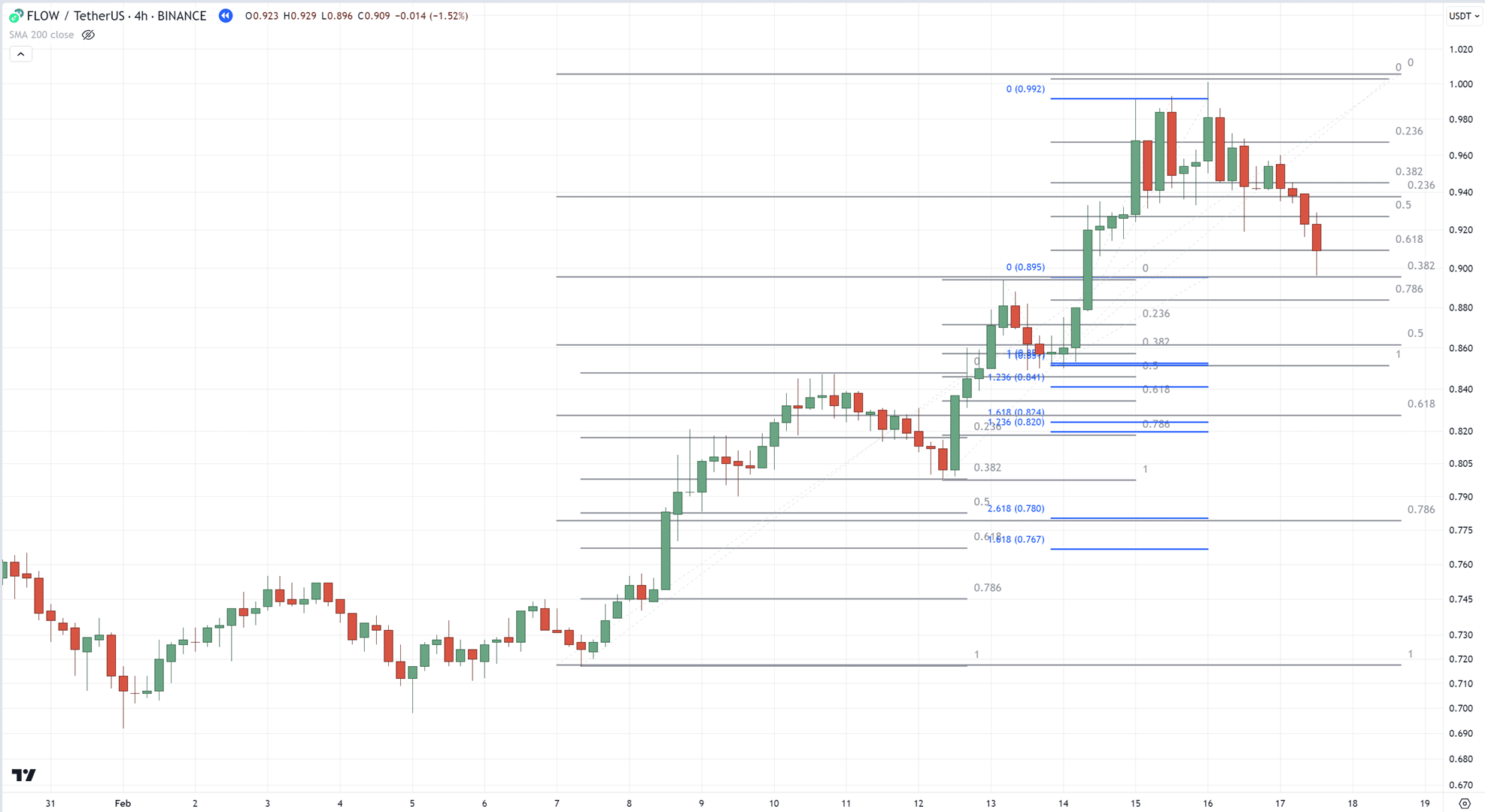
(can you even see the numbers?)
And try to plot them more like this…
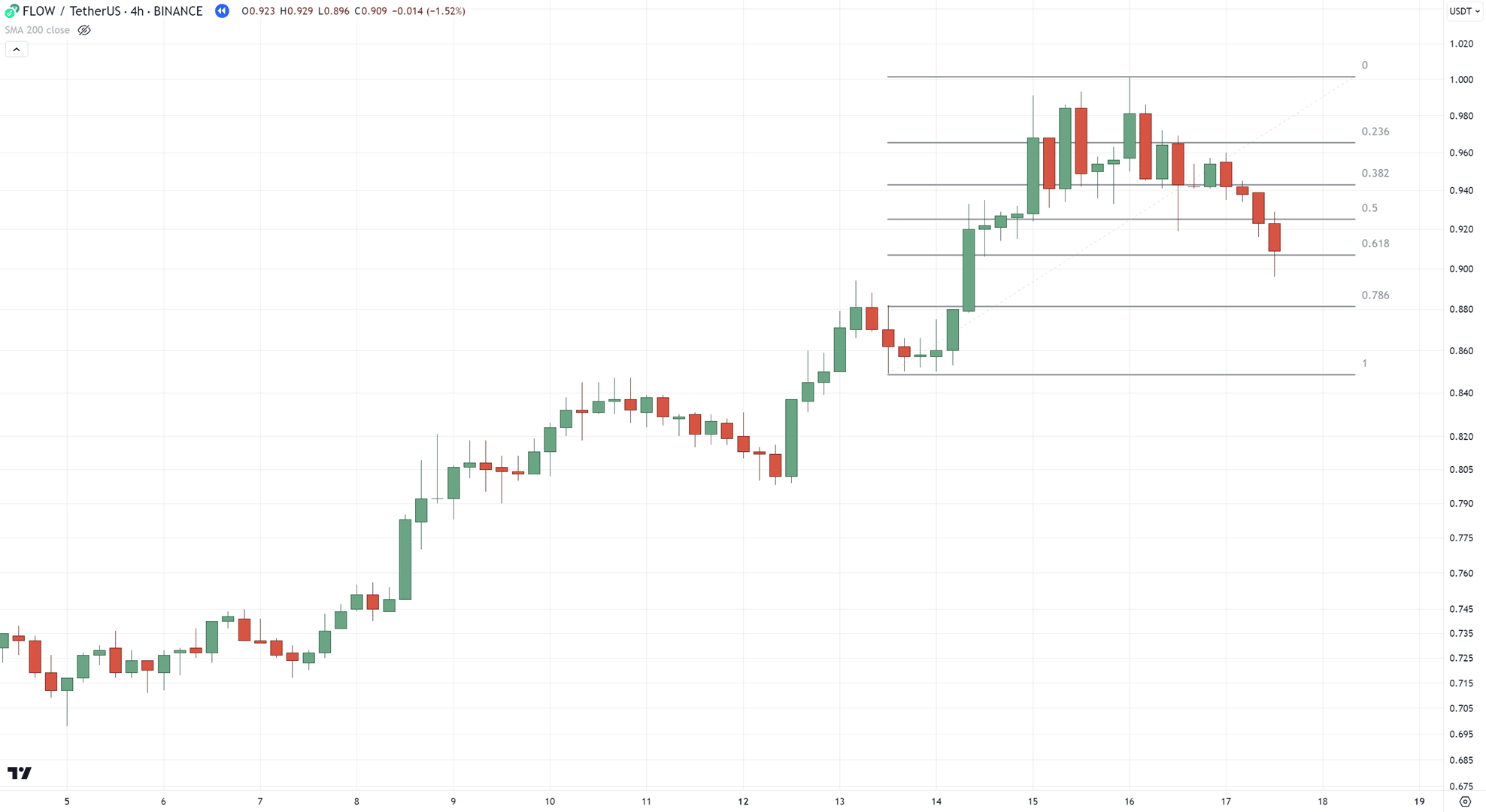
And never forget, you need to focus on the current price!
You should always be plotting Fibonacci levels that are relevant.
It’s an absolutely crucial point.
Now, I know you might be thinking…
“But I’ve seen traders plot a ton of Fibonacci retracements and extensions to profit from the markets!”
Sure, if you plan to use the Fibonacci tools to analyze the market, then yes!
But if you want to use it to trade the markets, then follow the golden rule:
Keep it simple!
Because simplicity brings about consistency, which leads to much more reliable results.
Now…
While you can use both the extension and retracement together…
Remember that everything depends on the context.
Don’t use the Fibonacci tools out of context
If the pullback is steep, use the Fibonacci retracement + extension combo…
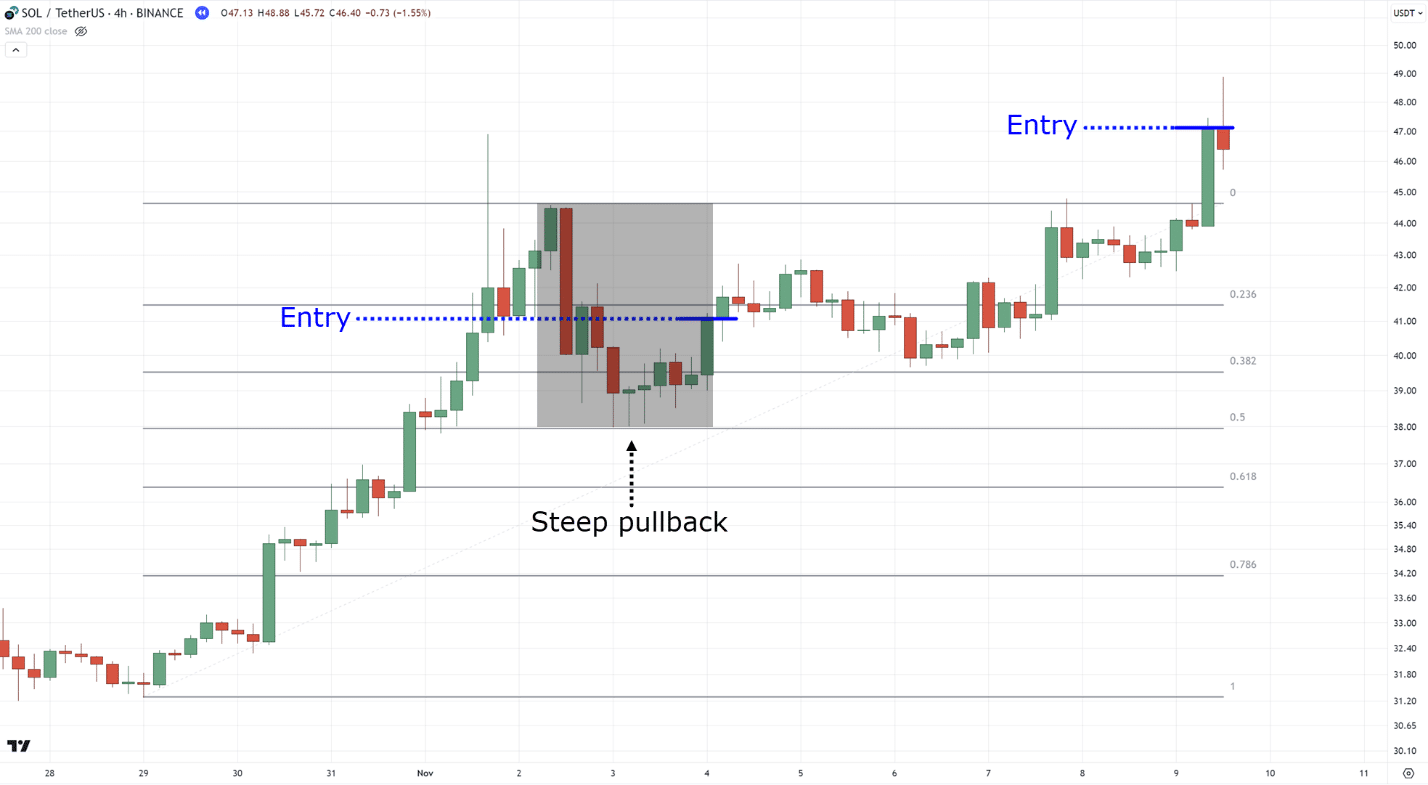
But if the pullback is shallow, focus on timing the breakout and only use the Fibonacci extension to know where to take your profits…
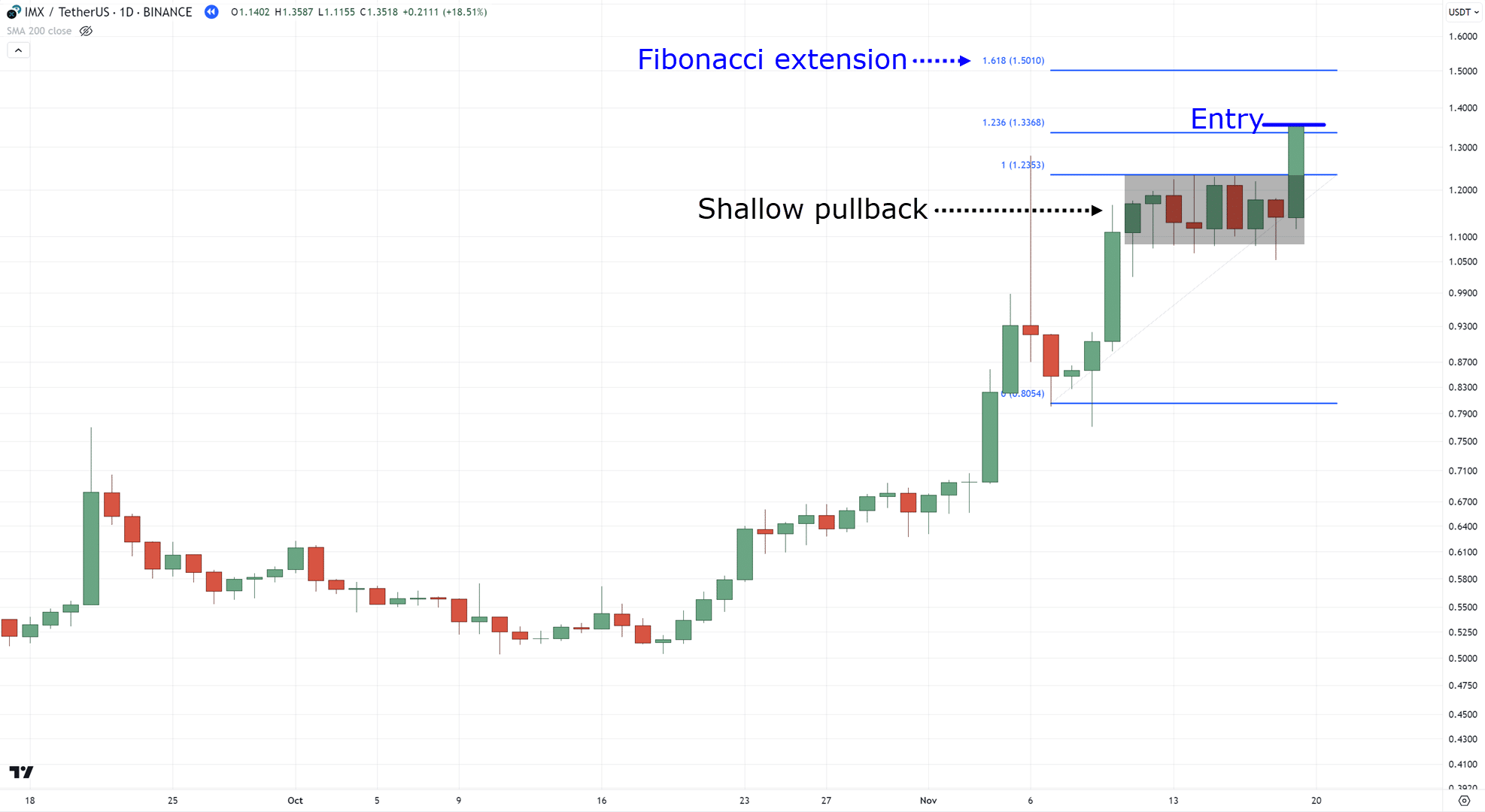
This means that not only do you need to know HOW to plot them…
…but also WHEN to plot them!
Plenty to think about, right?
So let’s break it down one last time!
Conclusion
Initially, the Fib extension vs retracement tool looks like a tricky trading concept you’ve always wanted to master but never attempted.
But as you’ve learned in this guide…
Using these tools doesn’t have to be so complicated!
With a bit of practice, you can use them to help pull consistent profits from the markets.
To sum up, here’s what you’ve learned today:
- Fib retracement captures pullbacks, while Fib extension projects breakout targets, with both serving unique roles in your trading
- Always start with identifying the trend and the setups you are trying to capture, then use which Fibonacci tool is relevant to your setup
- Using the TAEE framework is a simple and repeatable step-by-step process for you to execute in your charts
- The Fib extension vs retracement also allows you to be flexible on your risk management by scaling in or scaling out of your trades
- Avoid overcomplicated methods – keep your plots simple with the purpose of trading, and do not make a full market analysis report
- While both the Fib extension and retracement can be used at the same time, only use them depending on the context of the market
So, that’s pretty much it!
Now, over to you…
What’s your experience using these Fibonacci tools?
Are there concepts here you don’t agree on?
Or, if you’ve been using these tools for a while already, have you learned anything new along the way?
Jump in and discuss it in the comments below!


